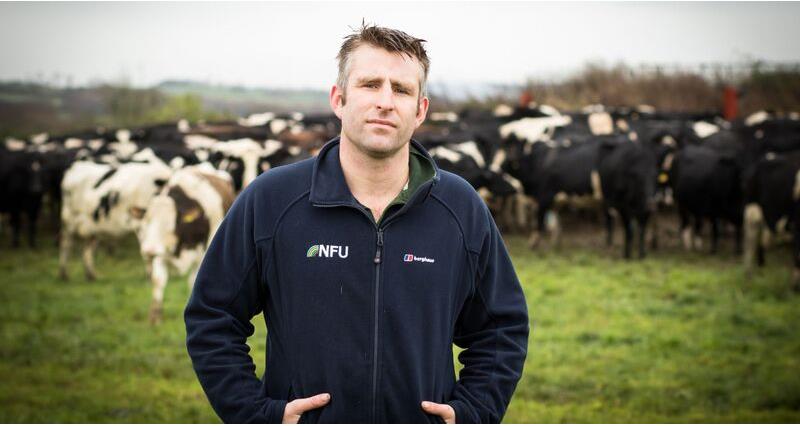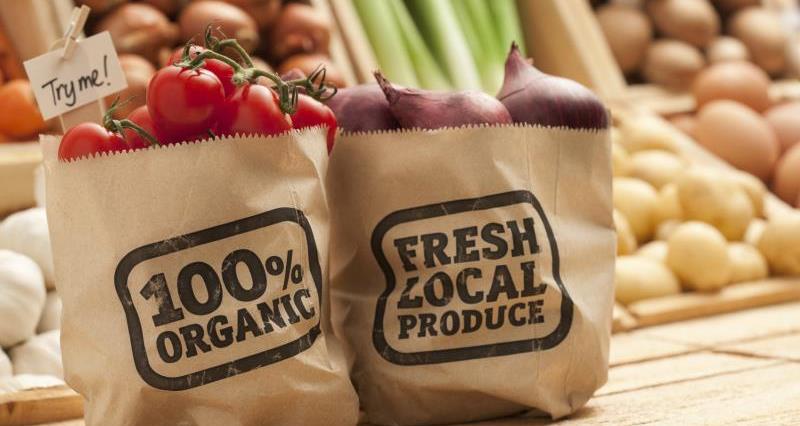Rob manages a mixed, organic farm located in North Gloucestershire within the Cotswolds National Landscape (AONB).
The third generation farm has a total land area of 600 acres, 500 acres of which is in grassland and the remaining 100 acres in crop rotation. The farm is managed in 3 blocks and was converted to organic in 2019 with OF&G (Organic Farmers and Growers).Â
The arable area of the operation is grown for cattle feed and is in a diverse, companion crop rotation of wheat and beans together and oats, barley and peas together. The livestock operation consists of both dairy and beef cattle. The dairy herd is made up of 200 autumn calving and 100 young Holstein/Friesian crosses, and the beef herd has 40 Hereford and Angus crosses. The farm is also located within an NVZ (Nitrate Vulnerable Zone), and has been a recent recipient of the FiPL (Farming in Protected Landscapes) programme.
Organic managementÂ
Rob transitioned to organic farming three years ago with OF&G because the land was already managed in the direction of using extensive and regenerative techniques. For instance, diverse crop rotations, mixed farming, minimal soil disturbance, low stocking densities and low inputs are all examples of alternative agricultural practices.
Furthermore, Rob believes there is huge potential within the soil if the conditions are maintained correctly, stating that just as much grass can be grown without the fertiliser inputs.
With input costs increasing, Rob also wanted to reduce inputs of fertiliser and pesticides to lower economic pressures, reduce risk and promote the natural environment. Crucially, the catalyst for change involved Arla Foods, the UK’s largest dairy producer, requiring more organic milk to be produced, which instigated Rob's transition to organic farming

Figure 1. Rob's indoor system for the cattle
Environment schemes
Rob is part of the Mid-Tier Countryside Stewardship which gives land managers incentives to look after the environment.
The main priority for Countryside Stewardship Mid-Tier is to protect and enhance the natural environment, in particular: biodiversity (the diversity of wildlife) and water quality. Other outcomes that are supported include; flood management, the historic environment, landscape character and climate change adaptation, and mitigation.
Since Rob implemented these schemes, he's noticed greater biodiversity in insect populations.
Some of the options which are carried out on farm are:
- GS4 (Legume and herb-rich swards)
- OP4 (Multi species ley)
- AB9 (Winter bird food)
- AB8 (Flower-rich margins and plots)
- GS2 (Permanent grassland with very low inputs)
- AB13 (Brassica fodder crop)Â
Agroforestry
Agroforestry is a land management approach which uses the interaction of agriculture and trees to produce benefits such as promoting soil health and crop yield. In December 2021, Rob planted a few hundred trees of varying varieties to explore the use of agroforestry on the farm.

Figure 2. Rows of tress planted in December 2021
By using alley cropping, a row of trees has been planted every 25 meters. Varieties of apples trees, walnut, oak, beech and willow have all been planted. Rob's motivations for venturing into agroforestry include an interest in soil health, stating that tree roots are good for mycorrhizal fungi, which play important roles in plant nutrition, soil biology, and soil chemistry.
Rob was able to apply to an FiPL grant to fund the agroforestry on the farm. FiPL grants were created by Defra to help farmers and land managers deliver work in the farmed landscape in the theme of climate, nature, people and place. Rob believes that agroforestry will be beneficial to the sustainability of the farm because of the associated benefits to soil health, moisture retention, nutrient runoff, climate change and advantages to livestock such as shade, shelter and medicinal properties.


